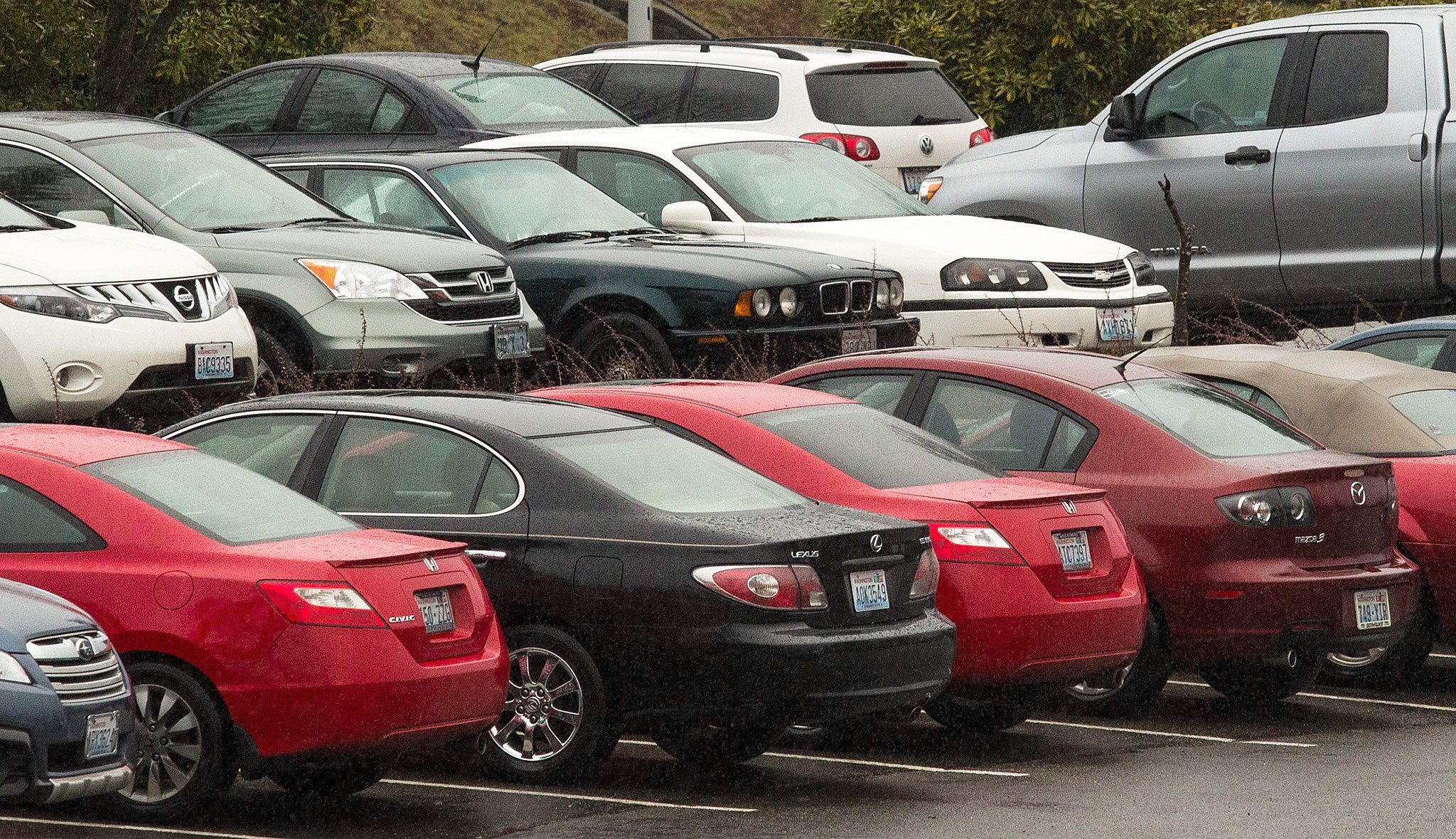Interactive graphic: Diagnose your car’s leak
There’s a mysterious wet patch underneath your car.
If you’re like many folks, your first thought is oil leak. If you know a little something about cars, maybe you add coolant to the list of possibilities. (If you’re like me, you simply shrug.)
Engine oil and coolant (anti-freeze) are the top offenders when it comes to leaks from vehicles. But the actual list of potential sources of leaks is much longer.
Transmission fluid. Power steering fluid. Brake fluid. Fuel.
And those are just the basics.
How about windshield washer fluid, or battery acid? The list goes on. (I can add differential oil from experience.)
“There are so many more fluids than oil,” said Mark Dowdle, owner of Everett Tire and Automotive. “They’re all toxic to a certain extent.”
And that becomes a concern when those fluids get caught up in one of our frequent rains, pouring into stormwater systems and trickling on down the line into the waters of Puget Sound.
The state’s regional Don’t Drip and Drive campaign aims to help prevent that environmental ill. (Bonus: Keeping our cars in good working condition.) The program started with automotive maintenance workshops led by local auto shop teachers from high schools and technical colleges. Those proved immensely popular.
This year, the program added free visual leak inspections at participating auto repair stores.
I decided to save $80 and try out the new service. So I headed over to Everett Tire and Automotive, one of more than 200 AAA-approved shops participating in the program.
Dowdle popped the hood on my family’s SUV and started pointing to potential problem areas he can eyeball without even moving anything around. “Right out of the gate you can have eight possible fluid leaks there.”
Veteran mechanic Robert Weldon propped the car up so we could get a tour underneath as well. He pointed to some seepage of axle grease near one wheel, but it was “insignificant” and nothing to worry about.
Phew.
I was the first Don’t Drip and Drive customer at the downtown shop. But the list of potential customers with real need is long.
Aging cars are most susceptible. “I can probably find a leak in any older car,” Dowdle said.
And if they do spot a leak? The Don’t Drip and Drive incentive program also comes with a 10 percent discount on repairs, up to $50.
Program operators hope that’s enough incentive to push drivers who already suspect they have a leak to get it checked out.
Sometimes people put off repairs because they are concerned about the costs. Weldon has worked with customers to take a step-by-step approach, fixing one thing at a time to spread out the costs.
“It’s better to have a game plan versus coming in when it’s broken,” agreed Dowdle. “That person that knows they have a leak, it’s a free inspection to find out the extent. You don’t have to buy anything from me. At least you can know.”
Don’t Drip and Drive is organized by the Stormwater Outreach for Regional Municipalities (STORM) consortium, the Washington Department of Ecology and more than 400 nonprofit partners. The Department of Ecology provides major funding through a grant to King County.
Have a question? Email us at streetsmarts@heraldnet.com. Please include your first and last name and city of residence. Look for updates on our Street Smarts blog at www.heraldnet.com/tag/street-smarts.
Don’t be a drip
The Don’t Drip and Drive program offers free auto maintenance and leak detection workshops, as well as free leak inspections at participating auto repair shops.
There are three Snohomish County locations that offer workshops each month. Here is the next workshop date at each location:
• Marysville Pilchuck High School, 5:30-9:30 p.m. Wednesday
• Sno-Isle Tech Skills Center, 9 a.m.-1 p.m. Friday
• Cascade High School, 10 a.m.-2 p.m. March 4
Learn more — and find a list of auto repair shops that offer free inspections and leak repair discounts — at fixcarleaks.org.
Talk to us
> Give us your news tips.
> Send us a letter to the editor.
> More Herald contact information.

























